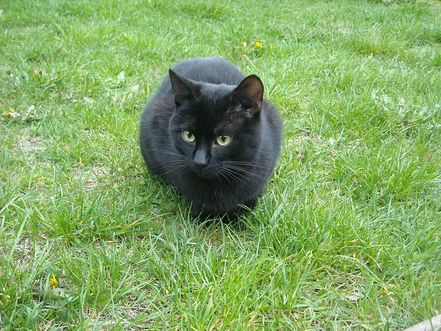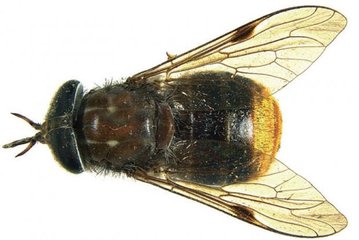 Felis catus Felis catus For the non-scientist scientific names can be vexing. Why in the world should a cat be called Felis catus? Have the scientists that coin these names (taxonomists) lost their marbles? What’s wrong with these people? Are they so bored that their idea of a good time is to spend endless hours dreaming up strange names? Why do they do that? If all of humanity spoke one language, taxonomy would be a simpler enterprise. The problem is that people speak hundreds of languages, and the ranges of the majority of organisms span several countries and even continents. Living things in different places are given different names. In fact, sometimes even among people that speak the same language an animal in one region is known by a different name in another. The problem is that we need to identify with accuracy organisms that are pests, or transmit disease, or produce some chemical that may be useful in medicine. Because of this need, scientists agreed on one system of classification that everyone could use regardless of their country, language, or culture. Living things are commonly referred to by the genus to which they belong followed by their species (a type of name and surname if you will), which is known as the binomial classification. These names are often (but not always) written in Latin or Greek words or Latinized words. The reason for this is mostly historical. During the beginnings of taxonomy (the science of classifying living things), Latin was the language of science and initial classifications employed Latin or Greek words. Eventually, even as the influence of Latin in science waned, because so many living things had already been classified and given Latin or Greek names, the system was retained. The majority of scientific names are made up of the Latin or Greek name of the organism and make allusions to some of its characteristics. So the cat is named Felis catus, which means cunning cat, the southern flying squirrel is named Glaucomys volans which means grey flying mouse, the mallard duck is called Anas platyrhynchos, which mean broad-snouted duck, the European polecat is named Mustela putorius which means foul-smelling weasel, and so on. Taxonomists name these organisms and then proceed to define certain characteristics that make the organism unique so they can be identified. By this metric you’d think that taxonomists have a pretty dull job. However, the actual scientific names are merely used to identify the entity. They don’t have to be logical or in any way related to a characteristic of the living thing. In fact they can be downright funny. A scientist from the Smithsonian Institution, Terry Erwin, decided to have some fun when naming new species of beetles belonging to the genus Agra. As a result of this we have Agra cadabra, Agra phobia, Agra vate, and Agra vation among others. The entomologist Gordon Marsh christened two new species of wasps Heerz lukenatcha (Here’s looking at you) and Heerz tooya (Here’s to you). Entomologist Neal Evenhuis labelled several new species of flies Pieza kake, Pieza pie, Pieza rhea, and Pieza deresistans (i.e. piece of cake, piece of pie, etc.). And there is even toilet humor! Entomologist Melville Hatch decided to name new species of round fungus beetles Colon forceps, Colon grossum, Colon horni, Colon monstrosum, and Colon rectum (do note that here “Colon” is derived from the Greek word “Kolon” meaning limb or joint).  Bugeranus carunculatus Bugeranus carunculatus A few scientific names are intentionally rude such as that coined by scientist, James Pakaluk, who seemed to be in a particularly spiteful mood when he named a beetle Foadia Pakaluk (FOAD is an acronym for F*** Off And Die), or that created by entomologist, Arnold Menke, who gave a new species of wasp the name Pison eu (hint: say it out loud). However, in many cases the scientific name sounds rude only as a result of misreading the original Latin or Greek names. An African species of wattled crane is called Bugeranus carunculatus. In English the genus of the bird sound like an elementary school insult until you realize that it is made up of the fusion of the Greek word bous, which means “ox”, and geranus, which means “crane” (hence ox-crane). The Tibetan blackbird is called Turdus maximus, but any possible scatological interpretation of this name vanishes when we understand that turdus is the Latin word for the bird we call thrush. However, Aploparaksis turdi, a tapeworm, does include in the species name a reference to the material where this living thing can be found. There are many motivations behind scientific names. In 1904 the English entomologist, George Kirkaldy, decided he would immortalize some of his romantic conquests as taxonomical names when classifying several new species of the so-called true bugs (hemiptera). So he created several new genuses: Dolichisme, Florichisme, Marichisme, Nanichisme, Peggichisme, and Polychisme (i.e. Dolly kiss me, Flori kiss me, etc.) followed by the species name “kirkaldy”. For this levity, Kirkaldy, was criticized as frivolous by the London Zoological Society, but his bug names nevertheless were retained. In 2002 Neal Evenhuis (of Pieza kake fame, see above) decided to take up this tradition by naming a fossil fly Carmenelectra shechisme in reference to the actress Carmen Electra (although he did not know her personally).  Dinohyus hollandi Dinohyus hollandi A less often seem theme in scientific names is insults levied against a person. For example, the seed bug Aphanus rolandri was named by the father of taxonomy, Carl Linnaeus, after a greedy student named Daniel Rolander who refused to show Linnaeus the specimens he collected. Aphanus means ignoble or obscure. Two Swedish paleontologists, Elsa Warburg and Orvar Isberg, despised each other so much that they traded insults by naming new species. Warburg gave a trilobite the name Isbergia planifrons (planiforms means “flat forehead” which is akin to “stupid” in Swedish) and Isberg named a species of mussel Warburgia crassa (crassa meaning fat). A prehistoric hoofed-mammal that was thought to be a type of pig was named Dinohyus hollandi by paleontologist O. A. Peterson after his boss the Carnegie Museum director W.J. Holland. Holland was greatly disliked because he insisted that his name be included in every publication even if he had not contributed to it. The name of the animal means “Holland’s Terrible Pig”, which of course can be read as “Holland is a terrible pig”!  Scaptia beyonceae Scaptia beyonceae However, most of the time having a new species named after you is considered an honor. For example, former US president George Bush, former Vice President Dick Cheney, and former Secretary of Defense Donald Rumsfeld had new species of slime-mold beetles of the genus Agathidium named after them by entomologists who wanted to thank them for their service. These were A. bushi, A. cheneyi, and A. rumsfeldi, respectively. The creator of the cartoon The Far Side, Gary Larson, had a new species of feather louse (Strigiphilus garylarsoni) named after him for his contributions to inserting science into the public consciousness. Nevertheless, sometimes this honor may not be for the most exalted of reasons. A species of horse fly with a prominent rear end was named Scaptia beyonceae after the voluptuous singer/songwriter Beyoncé. But you don’t even have to exist to have a species named after you! Consider a species of mushroom named Spongiforma squarepantsii after the cartoon character Spongebob Squarepants, a fossil trilobite named Han Solo after the Star Wars character, or a cave arthropod named Gollumjapyx smeagol after the character Gollum/Smeagol from The Lord of the Rings. Recently 7 new spider species were named after fictional spiders in literature ranging from Harry Potter to Charlotte’s Web. The shortest scientific names are those of a South Asian bat, Ia io, and a Chinese dinosaur, Yi qi. The longest scientific name belongs to the Southeast Asian soldier fly, Parastratiosphecomyia stratiosphecomyioides, which means “near soldier wasp-fly, wasp fly-like". Go figure. An even longer name, which was proposed for a crustacean from Lake Baikal, Gammaracanthuskytodermogammarus loricatobaicalensis, was thankfully invalidated by the International Code of Zoological Nomenclature!  Amorphophallus titanum Amorphophallus titanum Sometimes scientific names create uncomfortable situations. In 1878 in the jungles of Sumatra Florentine naturalist Odoardo Beccari discovered the plant with the largest unbranched flower in the world. The central structure of the flower called the spadix can grow to a height of 12 feet and is one of the reasons Beccari named it Amorphophallus titanum. Little did he know that the seeds of this plant would make their way to botanical gardens all over the world where they would become sensations every time they bloom, not only because of their size, but because the flower emits a putrid smell akin to a rotting corpse meant to attract flies and carrion beetles, which are their pollinators. As a result of this, the flowerings of A.Titanum specimens attract large crowds including families with children. This has created a “nomenclature problem”. What name do you call this plant? Do you really want to use the scientific name only to have to deal with a little child raising their hand and asking, “What is an “amorfofalus”? To avoid this, the naturalist Sir David Attenborough (who incidentally has a large number of creatures named after him) coined the term “Titan Arum”, which is now often used to describe the plant in public. I could go on and on, but you get the idea. The field of taxonomy has a rich history replete with anecdotes, inside jokes, and witty and flamboyant personalities. The work of taxonomists is important, and despite their obsession with research and the classification of living things, many of these individuals who spend countless hours in the field and the lab are having a good time. Remember this next time you read that a fossil amphibian was named Eucritta melanolimnetes (Creature from the Black Lagoon), that a bacterium that survived exposure to outer space was named Halorubrum chaoviator (traveler of the void), or that a squid-like creature was named Vampyroteuthis infernalis (vampire squid from hell)! Do you have a favorite scientific name? Write a comment and let me know. Cat picture by Tiki toko used under a creative commons attribution-share alike 4.0 international license. Picture of a wattled crane at Dallas Zoo by kusanagi seed used under a creative commons attribution-share alike 2.0 generic license. Picture of Dinohyus hollandi is from the University of Nebraska State Museum. Photo of Scaptia beyonceae by Erick used under a creative commons attribution-share alike 3.0 unported license. Photo of Titan Arum by Lothar Grünz is in the public domain.
4 Comments
Bill Blevins
1/25/2018 01:29:41 pm
You need a rude botany t-shirt: https://rudebotany.com/
Reply
Rolando Garcia
1/25/2018 06:38:41 pm
Excellent T-shirts with rude-sounding scientific names! Thanks for your comment.
Reply
David Edwards
7/22/2019 07:25:33 pm
There's also Satan eurystomus, a blind cave dwelling catfish, to contend with.
Reply
Rolando garcia
7/27/2019 07:31:12 am
Taxonomists have all the fun! Thanks for your comment, David.
Reply
Your comment will be posted after it is approved.
Leave a Reply. |
Details
Categories
All
Archives
June 2024
|
 RSS Feed
RSS Feed